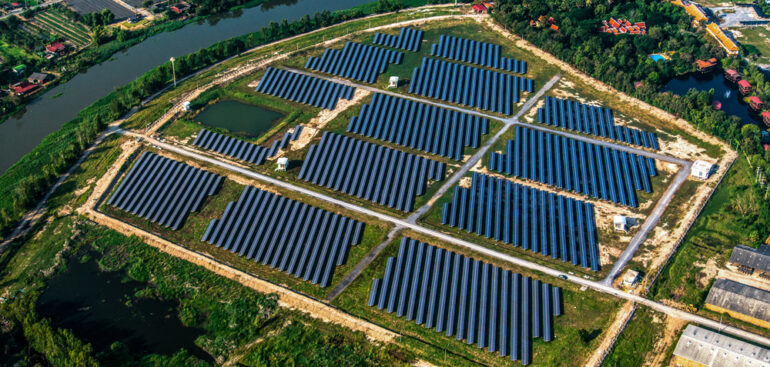India’s edge in renewable generation and the recent discovery of vast lithium reserves, along with deep cost reductions in clean technology, can enable a pathway for cost-effective energy independence by 2047, a latest Berkeley Lab study has found.
The study titled Pathways to Atmanirbhar Bharat, released by the U.S. Department of Energy’s Lawrence Berkeley Lab, examined India’s three most energy-intensive sectors – power, transport, and industry.
The study determined that achieving energy independence will generate significant economic, environmental, and energy benefits.
The economic benefits include $2.5 trillion in consumer savings through 2047, and a reduction in fossil fuel import expenditure by 90% or $240 billion per year by 2047. The lower value of imports and domestic savings are expected to enhance India’s industrial competitiveness globally and enable its net-zero commitment.
Domestic Lithium Reserves
The report said that most of the 2 million tons of lithium needed by 2040 for manufacturing new electric vehicles (EV) and grid-scale battery storage systems could be produced domestically using newly discovered reserves.
Additionally, the Indian industry must transition to clean technologies such as EVs and green steel manufacturing.
India is one of the world’s largest auto and steel exporters, with their largest markets in EU countries committed to carbon neutrality and a potential carbon border adjustment tariff.
“India’s energy infrastructure requires a $3 trillion investment in the coming decades, and our study finds that prioritizing new energy assets that are cost-effective and clean is crucial for long-term financial sustainability,” said Amol Phadke, Berkeley Lab scientist and a co-author.
The study found that India has a unique advantage in leapfrogging to a clean energy future since the bulk of its energy infrastructure has yet to be built.
India’s growing energy demand offers a significant runway of fifteen years for the existing fossil energy assets to transition to clean energy, the report said.
Looking Forward
The report showed that the country’s energy independence pathway would involve the power sector installing more than 500 GW of non-fossil electricity generation capacity by 2030, followed by an 80% clean grid by 2040 and 90% by 2047.
It said that 100% of new vehicle sales could be electric by 2035, and heavy industrial production could shift primarily to green hydrogen and electrification.
However, the energy transition would require significant policy support, including deployment mandates for clean technologies, financial and policy support for emerging technologies such as green hydrogen, and investment in domestic manufacturing capacity.
“The case for clean energy has never been stronger. India has achieved the world’s lowest renewable energy prices and has found some of the world’s largest lithium reserves,” said Nikit Abhyankar, Berkeley Lab scientist and the lead author of the study.
India is currently the largest energy consumer in the world, and its energy demand is set to quadruple in the coming decade. Currently, the country must import 90% of the oil, 80% of the industrial coal, and 40% of the natural gas it consumes.
Price and supply volatility in the global energy markets inevitably strain India’s foreign exchange reserves, resulting in economy-wide inflation.
The government, earlier in February, had announced the discovery of 5.9 million tons of lithium reserves for the first time in the country in the Reasi district of Jammu & Kashmir.
The Union Cabinet approved the Nationally Determined Contribution (NDC) as part of the global response toward climate change goals as agreed under the Paris Agreement. As per the updated NDC, India aims to reduce the emissions intensity of its GDP by 45% by 2030 from 2005 levels and achieve 50% of total installed power capacity from non-fossil fuel-based sources by 2030.



